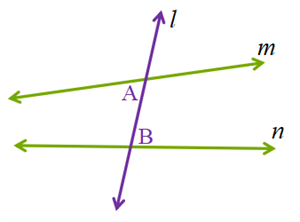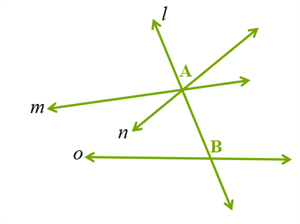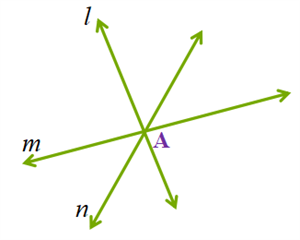PDF chapter test TRY NOW

m and n are any two non-parallel lines and l is another line intersecting them at A and B.
Such intersecting line (l) is called as transversal line.
A transversal line is a line that intersects two lines at distinct points.
NOTE:

The line l is not a transversal to the lines m and n, but it is a transversal to the pair of lines m and o , n and o.

Line l does not intersect the lines m and n at distinct points. So, it is not a transversal line.
